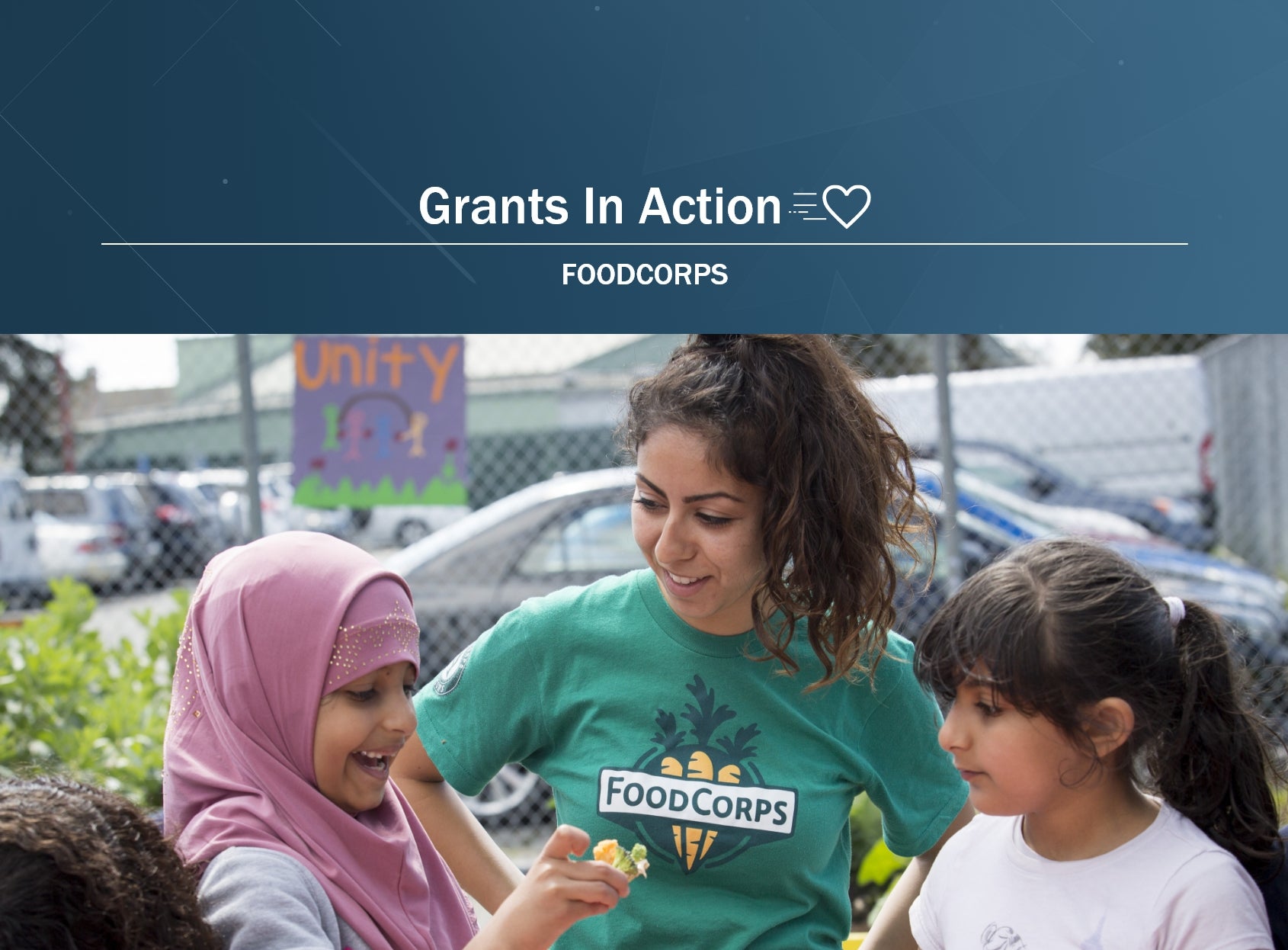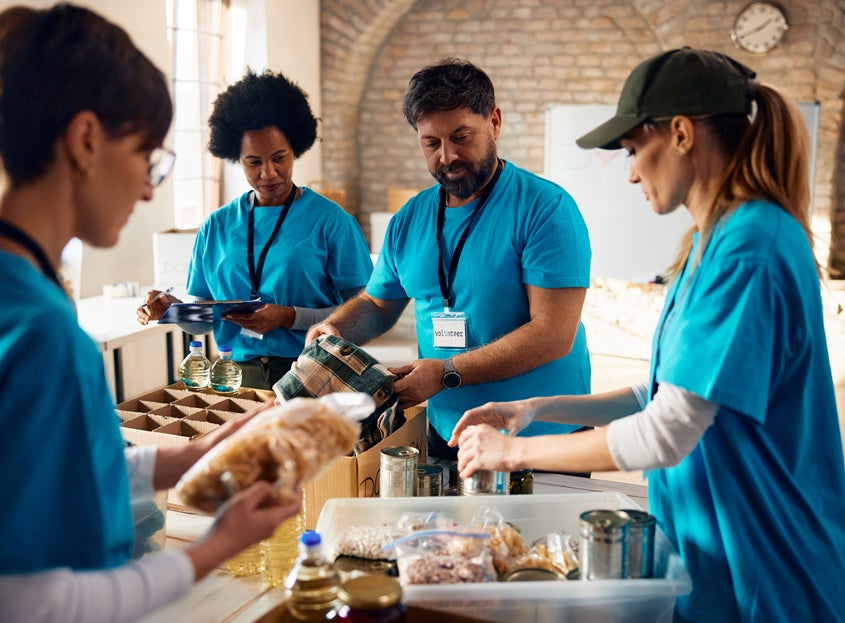FoodCorps Nourishes an Equitable Future for Students

The most popular place to eat in the United States caters to a very specific clientele. It’s so exclusive, in fact, most Americans cannot make a reservation.
That’s because the largest restaurant chain in America is the school cafeteria. Today, there are more than seven times as many school cafeterias as there are McDonald’s locations in the United States. So, for anyone looking to improve the way children’s nutrition is valued and achieved, the school lunchroom is a good place to start.
“At FoodCorps, we want every child to experience food as a daily source of joy and power. We partner with schools to nourish kids’ health, their education and their sense of belonging through food. That’s hands on food education where kids get a chance to smell the leaves of a tomato plant and taste the carrot with the dirt still on it.” says Curt Ellis, the founder and CEO of FoodCorps, a nonprofit that is a part of the AmeriCorps service network and operates nationally.
As of Fall 2023, FoodCorps serves over 250 schools in 16 states and the District of Columbia. The “nourishing school meals” tenet of their mission is fulfilled through promoting a “culture of health” in schools, prioritizing student-driven and culturally relevant meals and menus, supporting locally grown food, training nutrition professionals and increasing nutrition department capacity.
Kids need nutritious food to perform at their best, and FoodCorps strives to address the systemic obstacles that can result in the widespread issue of insufficient student nutrition.
“We don’t charge kids for getting on a school bus. We don’t charge kids for a desk. We don’t charge kids for chalk to go to the chalkboard, but we somehow still charge a huge number of students around the country for accessing the nourishment they need to thrive,” says Ellis.
According to the National Center for Education Statistics, in the 2000-01 school year, around 38% of all public-school students across the U.S. qualified for a free or reduced lunch through the National School Lunch Program. By the 2019-20 school year, that number had risen to around 52%. Putting that figure into perspective, that’s a little over 26 million kids.
It’s also worth noting that the application process for students to receive free or reduced school lunches doesn’t factor in possible obstacles students and their parents or guardians may be facing in this situation, like language barriers or a home life that isn’t conducive to a parent/guardian being able to complete the application.
Recently, several states have passed legislation creating allowances in their budgets for state-sponsored free lunches for all students, regardless of income, with Massachusetts being the most recent state to do so, and FoodCorps’ leaders view this development with great optimism.
“This is a moment of extraordinary policy opportunity at the state level. We’ve been leaning hard into that and seeing huge wins around making school meals free for every student,” Ellis notes. With the economic uncertainty that’s defined the COVID-19 era, many nonprofits have been greatly affected by rising prices, and FoodCorps is no different.
“The challenge of inflation is the challenge of intersectional inflation; as families see the rise of the cost of everything in their lives, these become compounding sacrificial choice points that are often being laid bare at the feet of the people who are already economically disabled,” says Dr. Robert S. Harvey, President of FoodCorps.
Philanthropic efforts can make this kind of work possible. Donor-advised funds (DAFs), in particular, can make consistent and frequent giving relatively easy for philanthropists—and during times of high rates of inflation, it’s important for donors to reflect on their giving plans and assess whether the gifts that were satisfactory last year will still have the same impact in the next year.
Despite the recent economic uncertainty, FoodCorps’ leaders feel that the future of their organization is as bright as ever. As Ellis explains, “What we’ve experienced is the extraordinary generosity of individuals stepping into that gap to make it possible for FoodCorps to not just keep the lights on through this period but grow and strengthen our work. Individuals have recognized that this is a period when transformational progress is possible with the right investments.”
NPT is not affiliated with any of the organizations described herein, and the inclusion of any organization in this material should not be considered an endorsement by NPT of such organization, or its services or products.
NPT does not provide legal or tax advice. This blog post is for informational purposes only and is not intended to be, and shall not be relied upon as, legal or tax advice. The applicability of information contained here may vary depending on individual circumstances.


